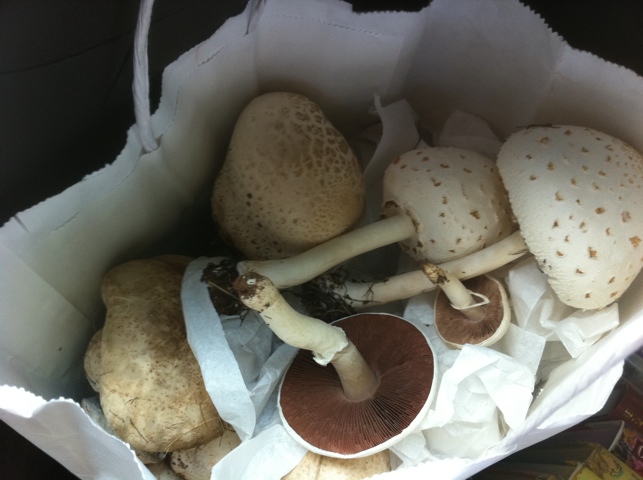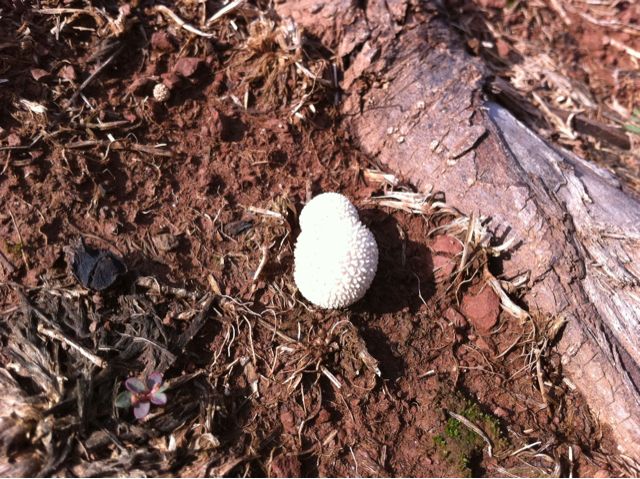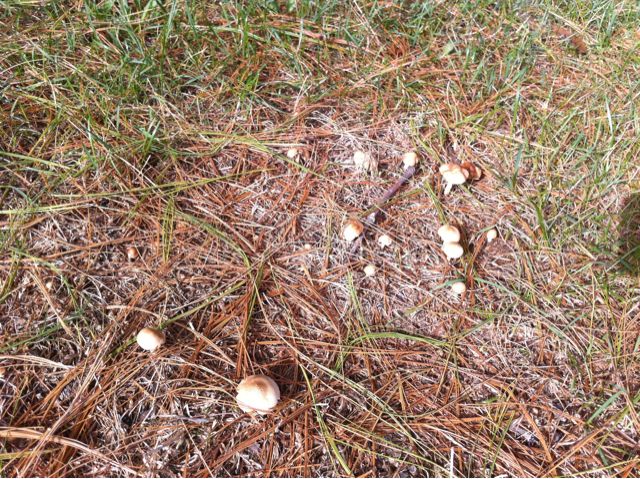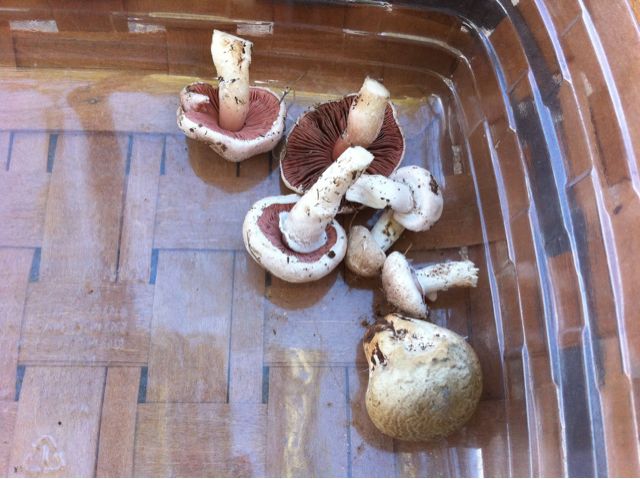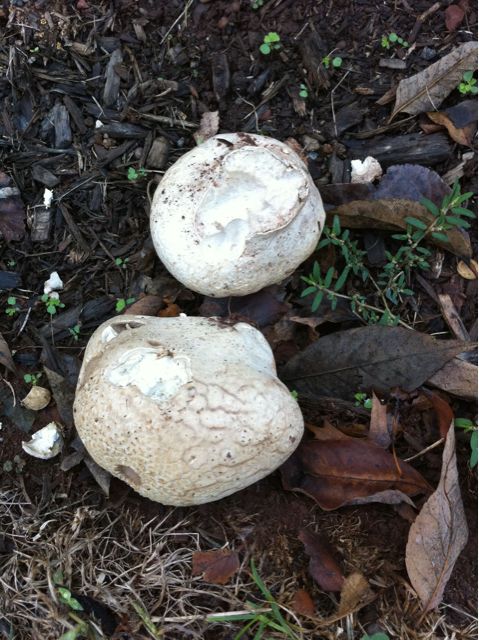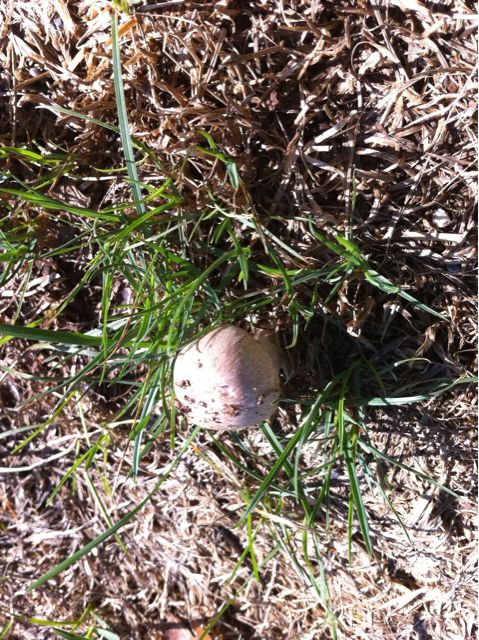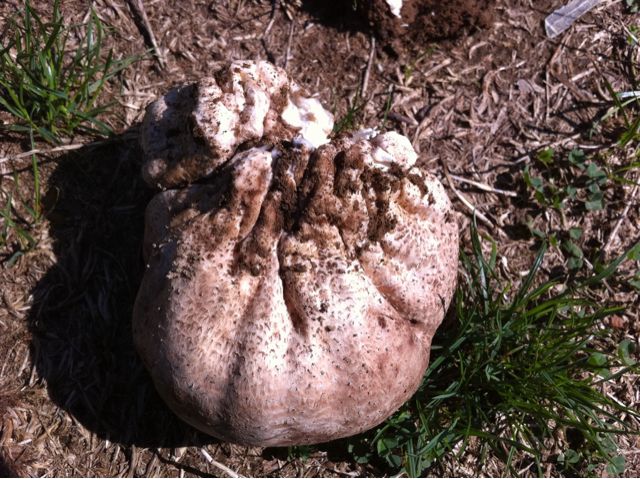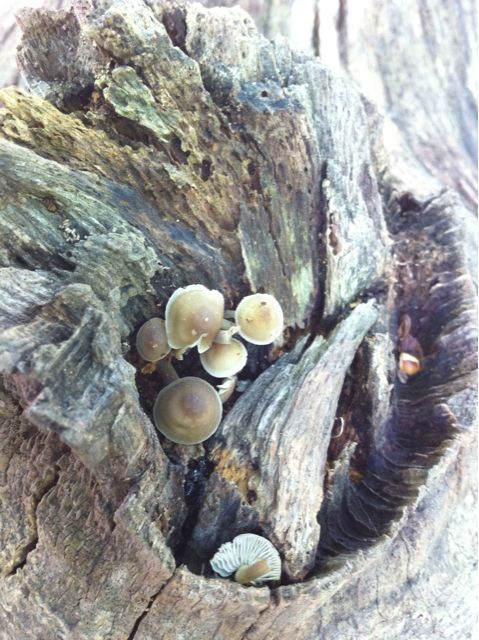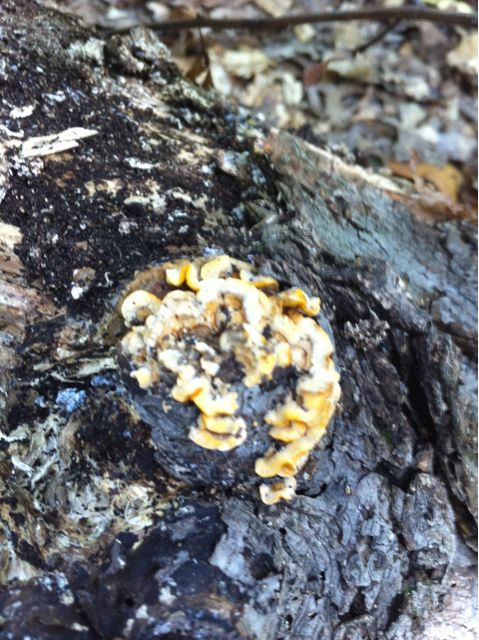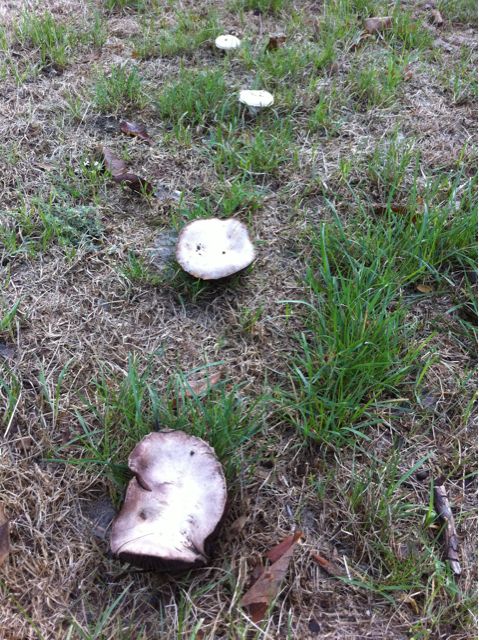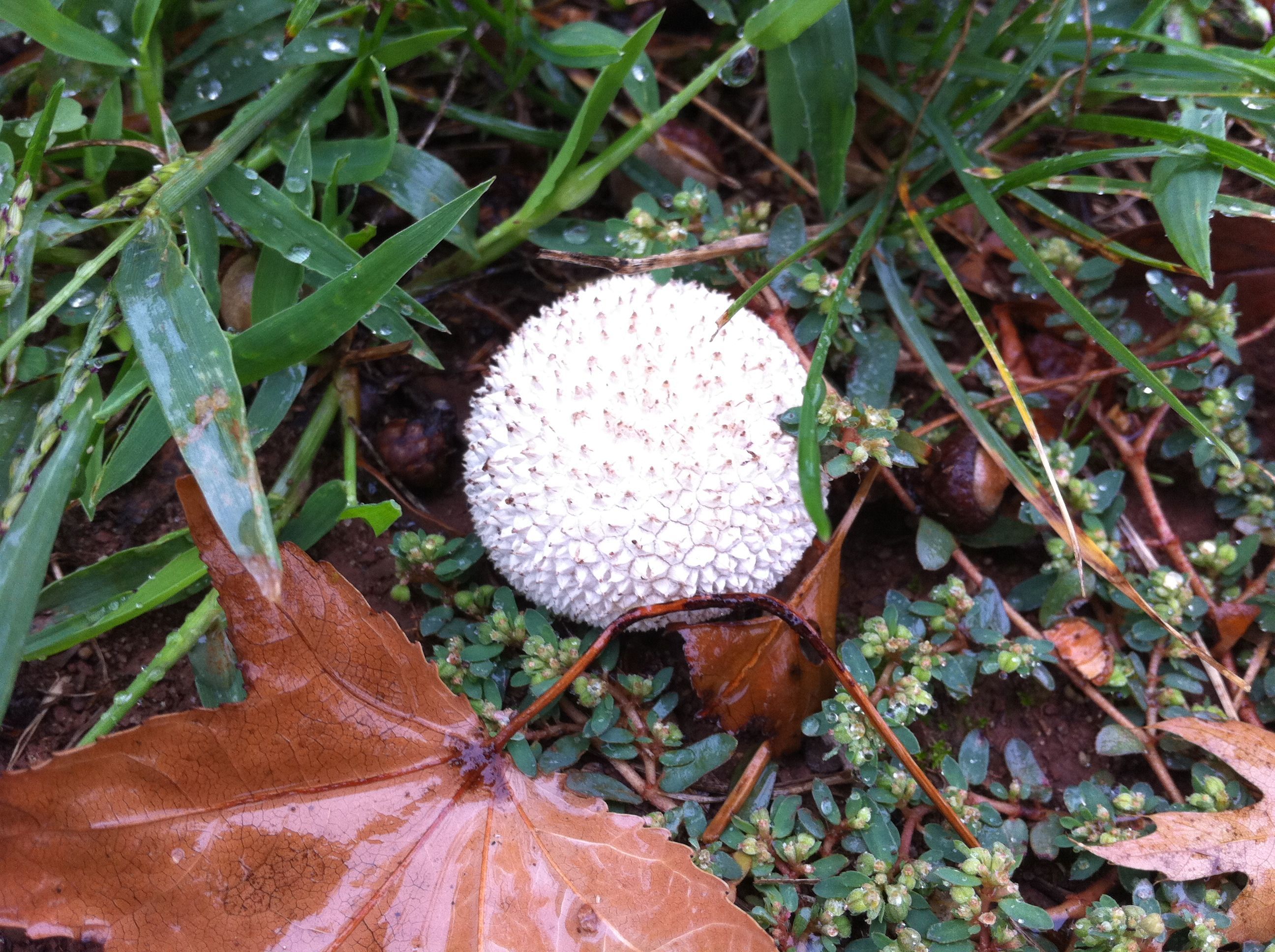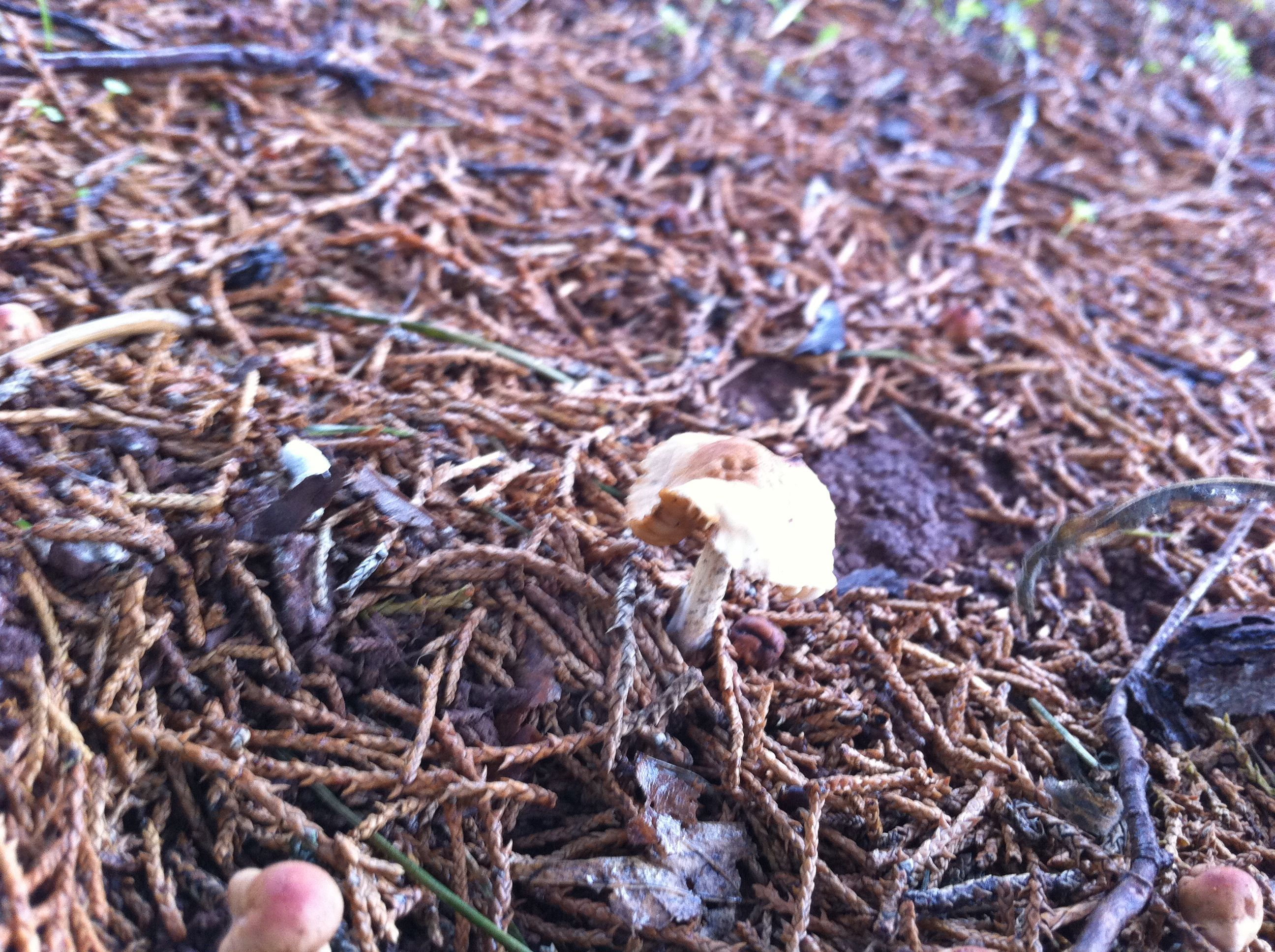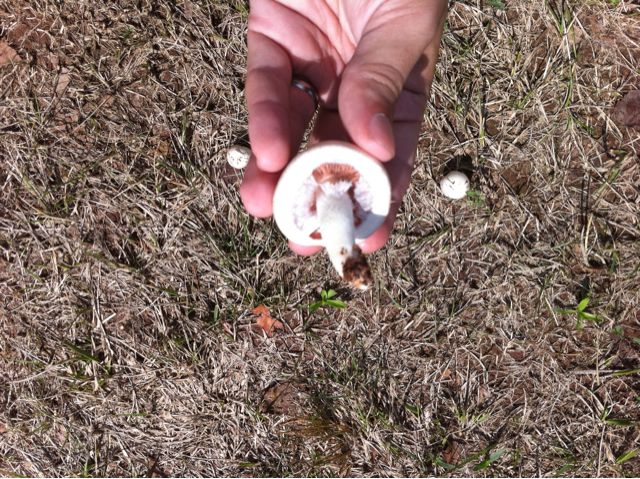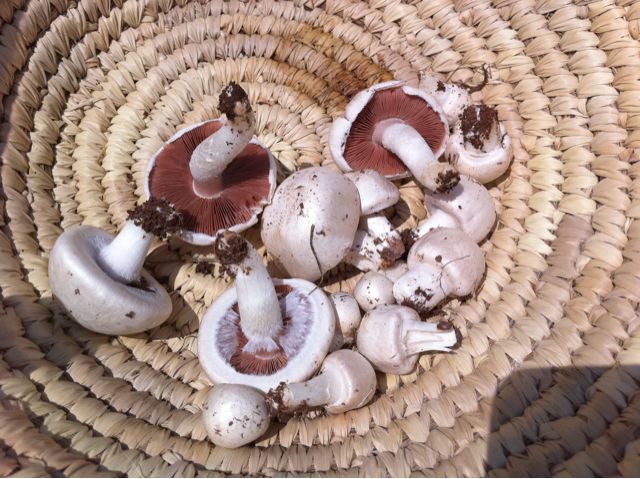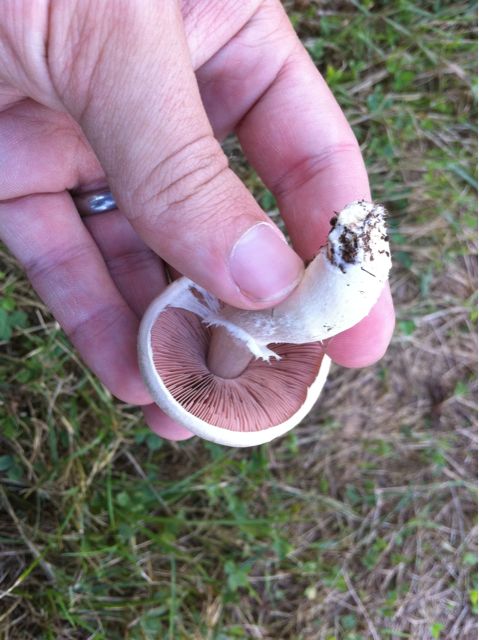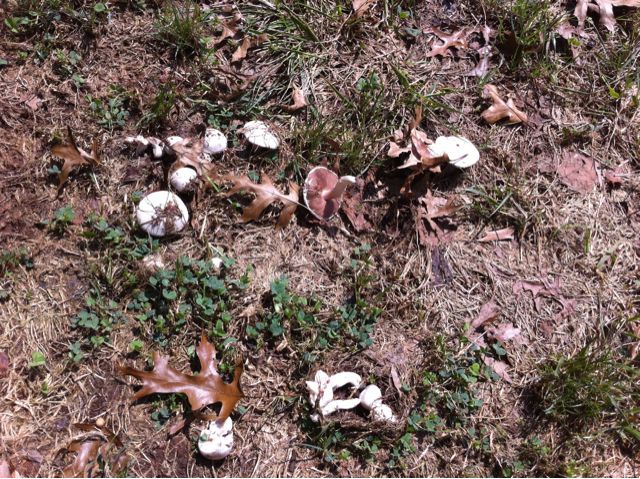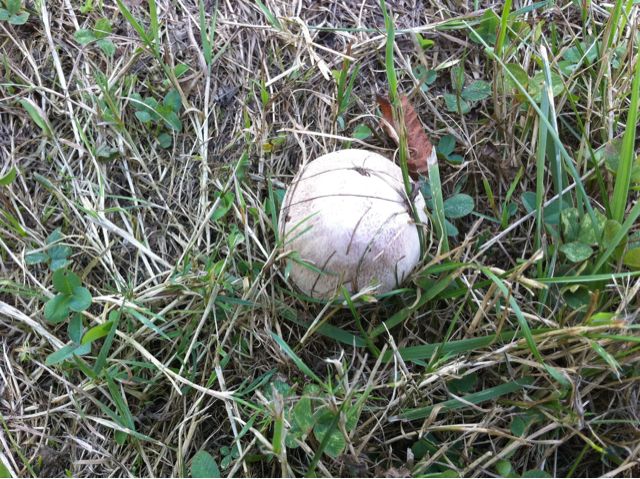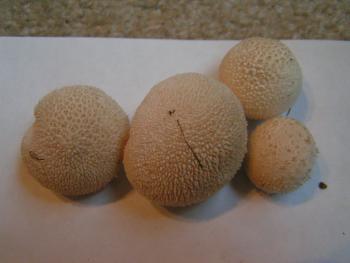Under that tissue paper is about 6 pounds of puffballs.
Category Archives: Vascellum curtisii (Lycoperdon curtisii)
Which Mushrooms Freeze Best?
So today I took an inventory of our freezer to see which types of mushrooms survived deep freeze better than others. I was quite disappointed to see that the only species that really “made it” throughout the winter was Chicken of the Woods (Laetiporus sp.). In fact, 90% showed no signs of degradation at all, however I did note a trend that the fresher it was frozen the better it held up. This is very promising as Chickens don’t dehydrate well *at all* (they become papery and gritty when they’re rehydrated, no matter for how long). Chicken “ends,” i.e. the bits that are corky to begin with and are destined for making into broth, work well when they’re dehydrated and then boiled in water to make soup, however they need to be scooped out after they’ve imparted their flavor to the broth as they are simply inedible.
All of our Oysters (Pleurotus sp.), Honey Mushrooms (Armillaria sp., including E./A. abortivum), Meadow Mushrooms (Agaricus campestris), and Puffballs (Calvatia sp., Vacellum sp. etc) didn’t make it through the winter months without serious freezer burn or going stale, no matter how well-packed they were.
All of our Hen of the Woods (Maitake / Grifola frondosa) that was in the freezer didn’t do so well either, but the dried Hens are still great, sealed in airtight mason jars.
This upcoming year I’ll be experimenting with more dehydration.
Peace,
-Steve
The Last Two Hauls
Lots of edibles collected on the 13th as well as this afternoon. Both walks were abbreviated as were still recovering from colds.
About 6.5 pounds of mushrooms total.
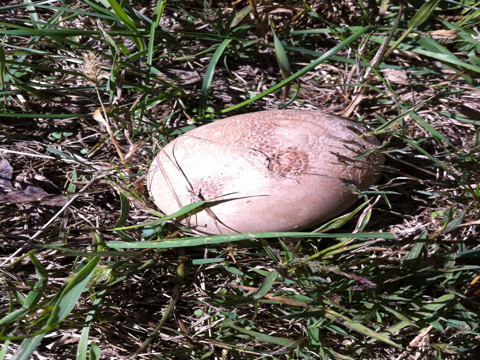
Calvatia cyathiformis
This one was one of the freshest I’ve come across this season. The flesh was pure white, firm, and smelled wonderfully.
(Didn’t quite resize properly. I’ll try and re-upload it later.)
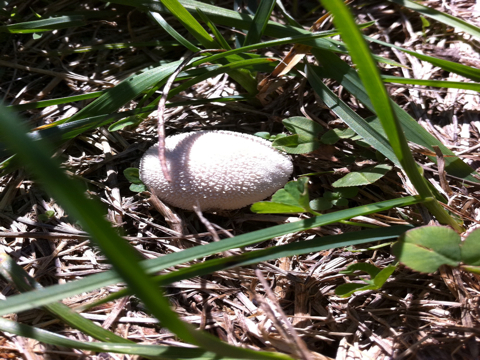
Vascellum curtisii
(Again, didn’t resize well.)
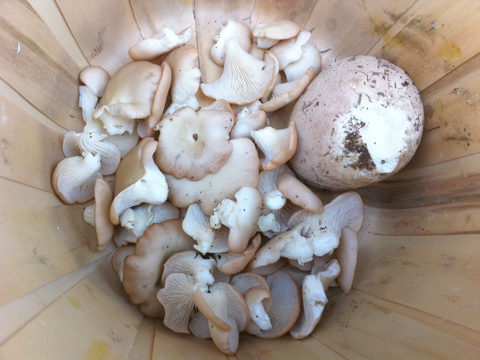
The C. cyathiformis from earlier along with a mess of Oyster Mushrooms (Pleurotus ostreatus).
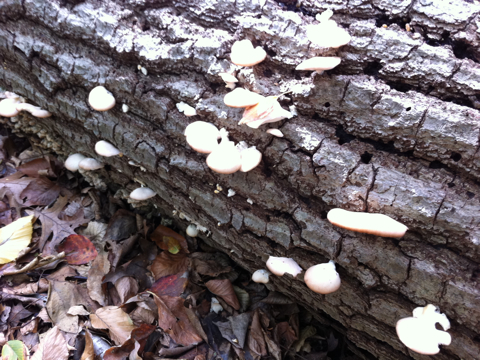
The patch of P. ostreatus.
This is the same log as before, whose base had the Hen of the Woods (Grifola frondosa). After last night’s rain, we looked a little further up the log and saw:
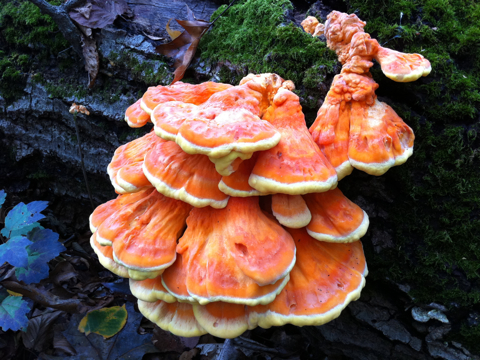
A *gorgeous* and *large* Chicken of the Woods (Laetiporus sulphureus).
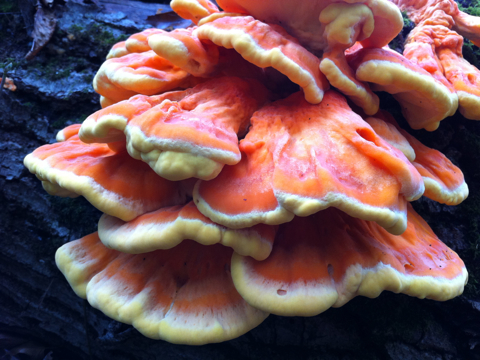
The entire thing was so fresh that not even the inner-most parts were corky yet.
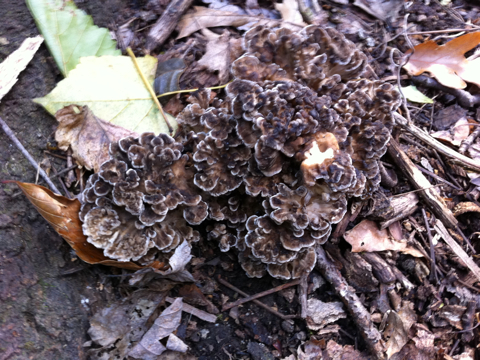
On our way out of the woods, we spotted a giant Black Oak tree (Quercus velutina) that had seven clusters of young Hen of the Woods (Grifola frondosa).
We took three. This one.
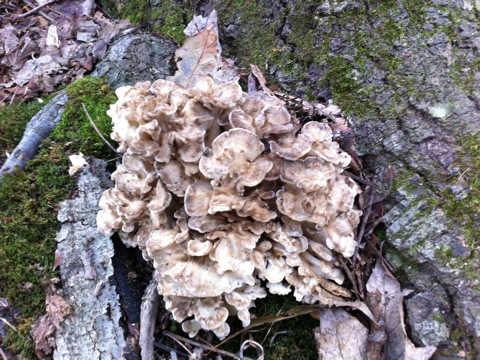
This one.
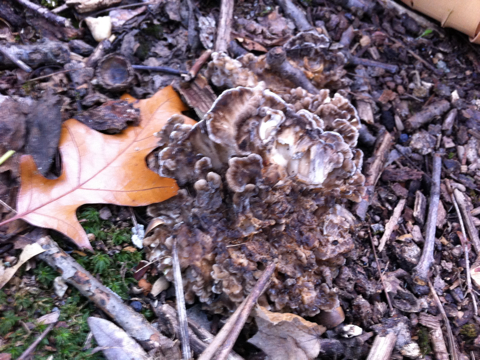
Not this one.
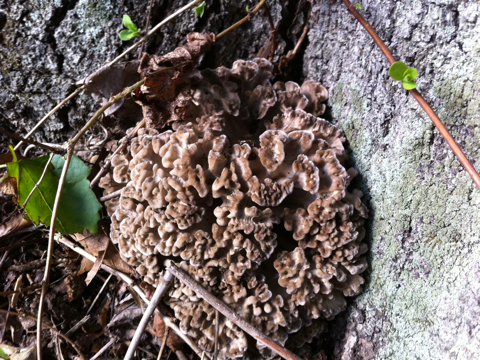
And this one.
Tomorrow we plan on coming back to see how the others have grown (or if other mycophiles helped themselves). 🙂
Peace,
-Steve
Update: Vascellum
Reading up on mycological literature, I’ve found that what has been traditionally called Lycoperdon curtisii has been reclassified as Vascellum curtisii.
As such, I’ve updated my category names.
Peace,
-Steve
Mushroom Wednesday
After two days of steady rain there was a huge bloom of mushrooms.
Here are some that we’ve pulled in so far. 🙂
Peace,
-Steve
Vacellum curtisii
Calvatia cyathiformis
Marasmius oreades
Agaricus campestris and one C. cyathiformis
Another M. oreades
C. cyathiformis
Two A. campestris
Two A. cyathiformis
Unidentified Marasmius.
Unidentified.
A. campestris
Lycoperdon and Marasmius
Meadow Mushroom Pics
Meadow Mushrooms in Colonial Park
Yesterday we all decided to take a trip into Colonial Park to search for mushrooms, and we were pleased to find a large bloom of Agaricus campestris (Meadow Mushrooms) and assorted Lycoperdon (Spiky Puffballs). I’ll have some images of them up as soon as I sync my phone.
Peace,
-Steve
October 25 – Lycoperdon
August 26 ’07 – Lot 12
A beautiful assortment of Lycoperdon. I’ll be buggered if I can figure out which species, though. Because the spines are not circular and the points of them tend to stick together in clusters of three or four they’re probably either Lycoperdon pulcherrimum or young Lycoperdon echinatum.
UPDATE: They are Vascellum curtisii (aka. Lycoperdon curtisii).
